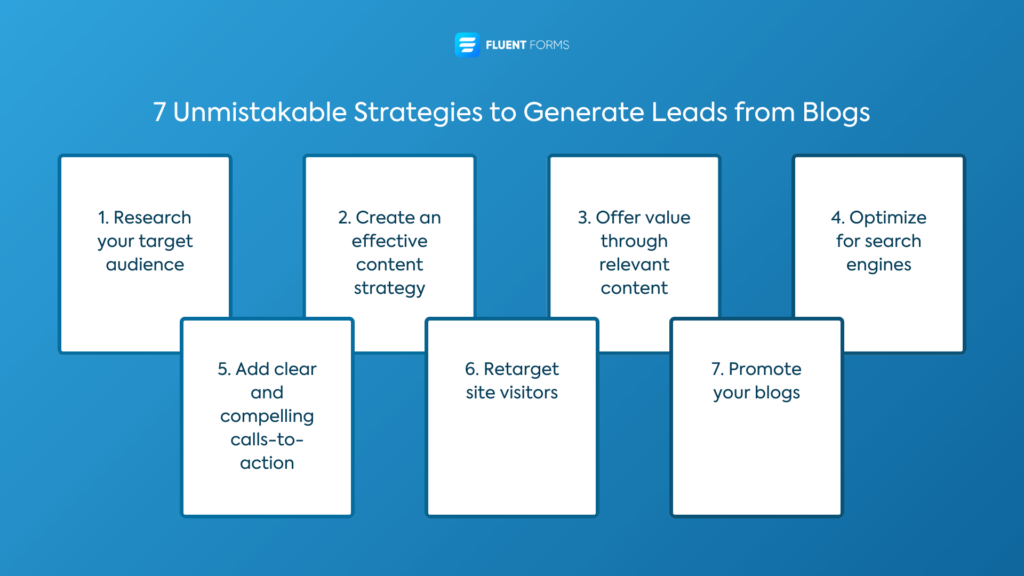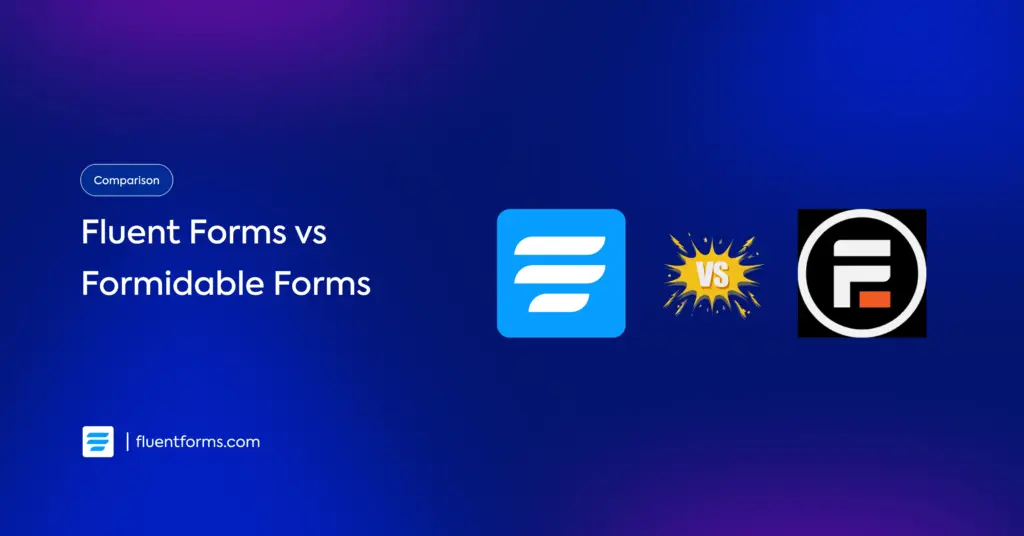7 Unmistakable Ways to Generate Leads from Blogs

In 1999, to promote their low-budget horror film, the filmmakers of “The Blair Witch Project” created a website that documented “missing persons” reports, backstories, and events surrounding the movie characters.
It led people to believe the film was based on a true story. This innovative use of blogging spread curiosity worldwide, making the movie a huge success. With a total investment of $8 million including filming, postproduction edits, and marketing, the movie made $249 million globally.
It’s one of the earliest examples of blogs being used for marketing. To this day, your efforts to generate leads from blogs will not fail you if you learn how to do it right.
Why generate leads from blogs
You could ask why generate leads through blogs when there are a million and one different ways of doing so in this digital era. Well, the answer is blogs are the classics. While reels and short videos are the current trends, leaving images, videos, and carousels behind, blogs continue to hold their initial charisma to captivate readers.
Hubspot reports blog posts are the most famous format of content, and companies who post blogs regularly generate 67% more leads per month than companies who don’t. Additionally, it earns you 97% more backlinks to your website, seeing as blogs usually link to other valuable blog posts for relevant anchor texts.
While YouTube tutorials are helpful and save time, there is no alternative to blogs when readers want an elaborate explanation where their brain can process information at its own pace. Perhaps that’s why 76% of bloggers publish educational content, and most find listicles to be working best for being scannable and easy to read.
7 unmistakable strategies to generate leads from blogs
Blogs are words tailored for the audience you want to attract to your business. Blogs are your message to them, it’s how you communicate with them. You shape their perception and impression of you through blogs.
And when those readers find you likable, trustworthy, and useful, they decide to communicate with you in return. They do it by signing up, subscribing to your newsletter, or by requesting your products and services. This is how you generate leads from blogs.
Let’s see how you can make this communication with your audience effective and successful.

1. Research your target audience
First things first. Posting random blogs on the internet will not generate leads. The key to capturing leads for your business is knowing who your business is for. That’s where your target audience comes in. To know your target audience, you have to create your ideal buyer persona.
So how do you create an ideal buyer persona for your business? Well, a buyer persona is a fictional person who fits the category of people who might be interested in your business. You find out who they are by researching the market, demographic, behavioral, and psychographic data, your competitor’s buyers, etc.
This includes age, gender, location, educational level, occupation, income range, buying habits, marital status, motivation, lifestyle, interests, opinion, etc. of the said group of people. Research all these data to find out which group of people resonates best or engages most with the products or services you’re offering.
2. Create an effective content strategy
After you find your target audience, look for what they relate to, their pain points, what might add value to their life and profession, etc. Make a list of all topics you find. Cross-check them with what your competitors are writing about. See if you have missed any points or can find new angles.
Do keyword research on the topics you have listed to single out the focus keywords for your blog topics. Group the similar topics.
Create a content calendar for a month to a year according to your preference. Plan how frequently you want to publish blog posts and strategize which blogs to post on which date.
Post the blogs that cover the surface level of any topic cluster first, and then move on to the blogs that cover the deeper angles and insights.
Interlink the related content with clear and appropriate anchor texts. Do not force the interlinking. Showcase the relevant contents in a section under each blog post, so readers can easily move from one blog post to another related blog post if they want.
After you complete a topic cluster, look for content gaps. Once you find any, write on those topics. See if you can find any new angles and cover them as well.
3. Offer value through relevant content
One thing you always need to keep in mind is your blogs must meet search intent. Search engines pick up on people’s engagement rate and time spent on blogs. Therefore, you need to provide what people are looking for in your blog posts to appear on top of the search results.
Not every one of your target audience is equally familiar with your product or brand. While some are looking for the solutions you provide, some might not know yet that those solutions exist. You need to create content for every one of them, covering each stage of their buyer’s journey and the pain points at those stages.
Your blog content has to have relevance to the topic, otherwise, the bounce rate will increase and you don’t want that. Make sure it provides value to the visitors. When you can deliver value and relevance through your blog posts, it presents you as an expert and a thought leader in your industry, making your brand stand out.
The blogs you write for the readers who are ready to make a purchase must state why you’re unique and why they should choose to buy from you instead of your competitors.
After you ensure the value and relevance of your blog posts, you can play with the other things. Try adding a hello bar, an interesting title, or humor to the blog text or image, do A/B testing with the format, positioning of elements, color, etc., and see what works best among your audience. Make sure the design and content reflect your brand identity.
4. Optimize for search engines
Search engine optimization (SEO) is vital if you want to appear in the SERPs (search engine result pages.) It’s the technical side of your blog that helps visitors find your blogs via search.
Conduct proper keyword research, and use the primary and secondary keywords in your blog organically. Do not stuff or force keywords where they don’t belong. Make sure to include the focus keyword in the title, meta description, and at least one heading, in the first 10% of the introduction, in the conclusion, and relevant places of the body text.
Add alternate texts to images, and write a suitable meta description and permalink. Use headings and sub-headings in proper hierarchy. Link to valuable external and internal resources.
Finally, make sure your content is scannable, easy to read, and easy to process information from.
5. Add clear and compelling calls to action
CTA (calls to action) is how you generate leads from blogs. So make sure to create clear and compelling calls to action and place them in your blog strategically. CTAs are supposed to guide your audience from one stage of their buyer’s journey to the next, keeping the navigation smooth and easy.
See that your CTAs are action-oriented and your blog readers know exactly what they’re getting when they click on a CTA.
Offer them downloadable resources like a summary of the blog post, a PDF, an e-book, free templates, whitepapers, and other valuable resources that they would be willing to get in exchange for their emails.
You can also offer special discounts, free products, or services for them to sign up or subscribe to your email newsletter.
Make your brand trustworthy. place enough privacy policies, so your audience feels safe sharing their personal information with you.
Don’t add too many CTA buttons. Add one in the hello bar (the top bar that stays constant when a reader scrolls further down a blog post), one in the content, and another in the footer.
You can also add exit intent pop-ups and scrolling or static sidebars to capture leads. Make sure all the CTA buttons and pop-up designs reflect your brand identity.
Moreover, you can add lead capture forms as well to collect valuable customer data; just don’t ask for too much information or your potential leads might skip it.
6. Retarget site visitors
More often than not, your visitors are in a hurry and they might leave your site after reading a blog or a segment of it. You need to retarget those visitors.
One way to retarget site visitors is to use retargeting pixels. A retargeting pixel is a piece of code you use on your website that leaves a cookie on the visitor’s browser. When the visitor leaves your site, that cookie can tell other platforms to show your ads to that person.
Since they have already engaged with your content, they might be more inclined to sign up, purchase from you, or take a desired action after a gentle reminder. This is where the retargeting pixel helps find visitors and subtly reminds them of your products or services.
Retargeting pixels are very effective in segmenting your visitors based on their interaction with your blog and readiness to purchase. This segment further helps you to show them personalized content via the social ads that they are most likely to click on.
7. Promote your blogs
Last but not least, share your blog on appropriate channels that your target audience frequents. Make them easy to share with others as well.
People spend a lot of time on social media, and sharing your blogs on those platforms is a great way to generate leads from blogs. Write appropriate captions for each social media platform. Make them interesting so your audience is curious to learn more and clicks to read the full blog.
Remember, it is a long term lead generation process to generate leads from blogs. It requires patience and adaptation. You need to constantly come up with innovative ideas for blogs to attract your audience and stay ahead of your competitors. Be open to learning new things as you go, so you can always stay trendy, deliver fresh content, and engage new leads as you go.
Summing up
Generating leads from your blog is more than just publishing posts. It’s about strategically planning content that speaks to your target audience.
Then comes optimizing them for search engines, and including clear CTAs to guide readers through their buyer’s journey by making them take a desired action. By consistently delivering value and offering free resources to your audience, you can easily generate leads from blogs.
Measure your performance, learn from what works (and what doesn’t), and refine your approach to keep growing your audience and converting readers into leads. With the right mix of insightful and targeted content, your blogs can be the structure of your lead generation strategy.
Finally, always look for room for improvement in your blogs. Update, and repurpose them regularly for other channels to get even more return on the efforts you put into blogging. And don’t forget to equally invest in converting the leads you generate along the way.
Let us know what you think of our blog lead generation strategies, and share your ideas in the comments for our fellow readers!







Leave a Reply